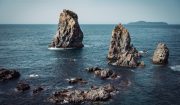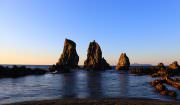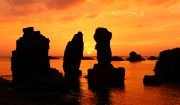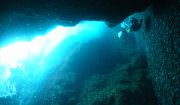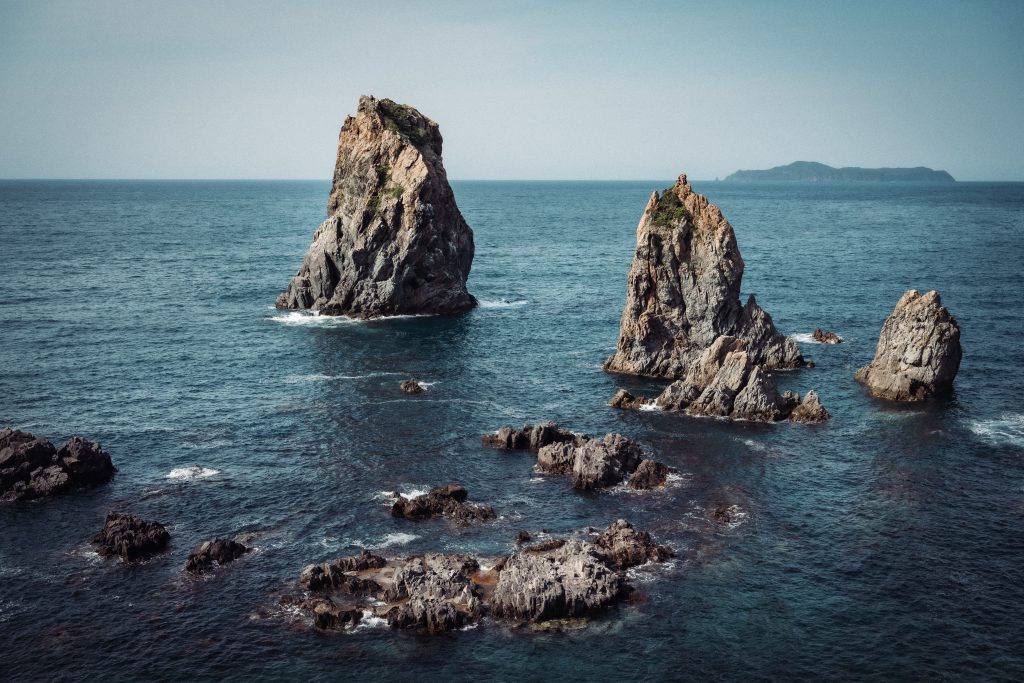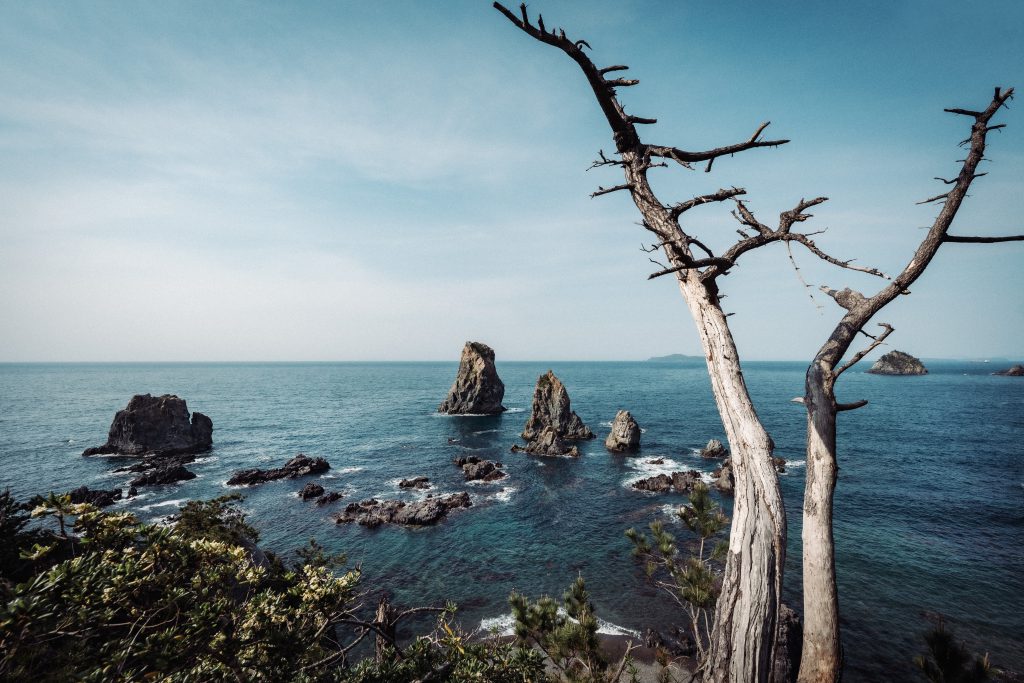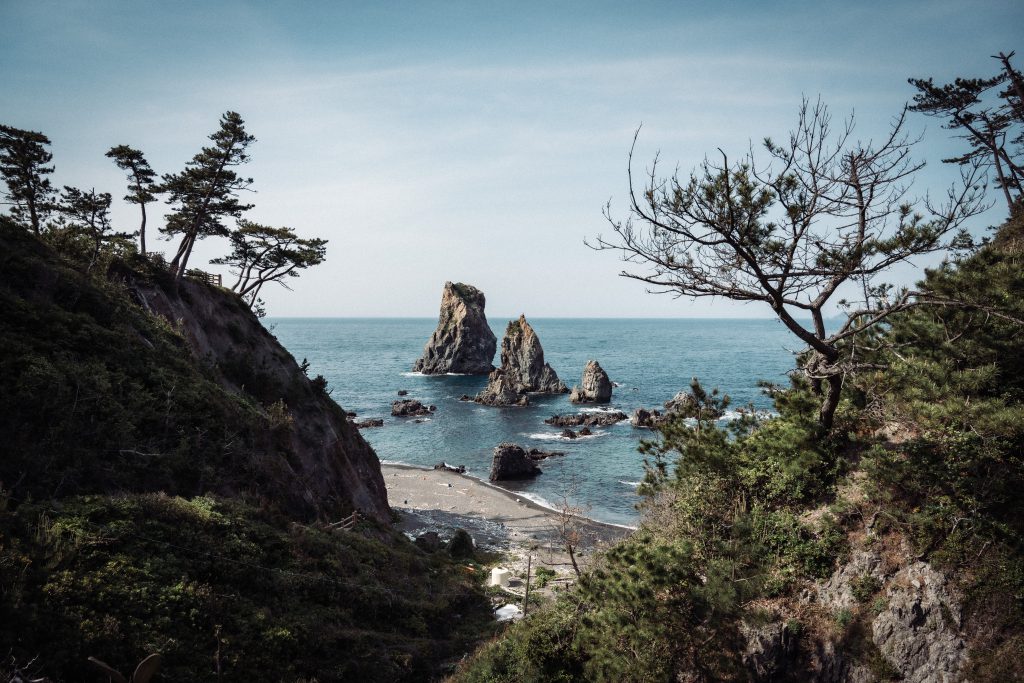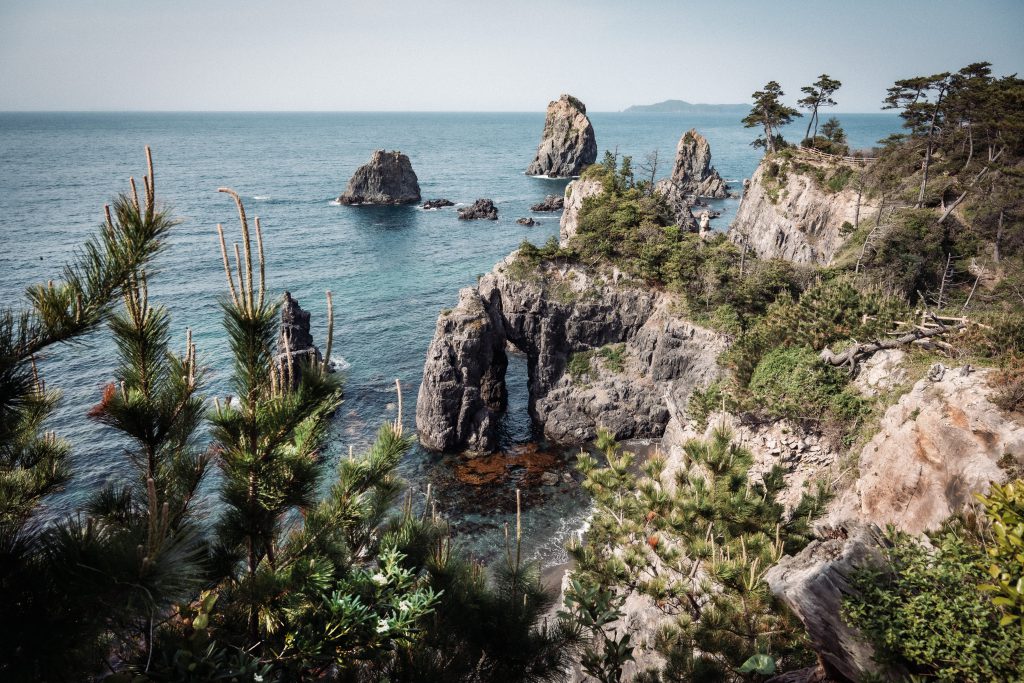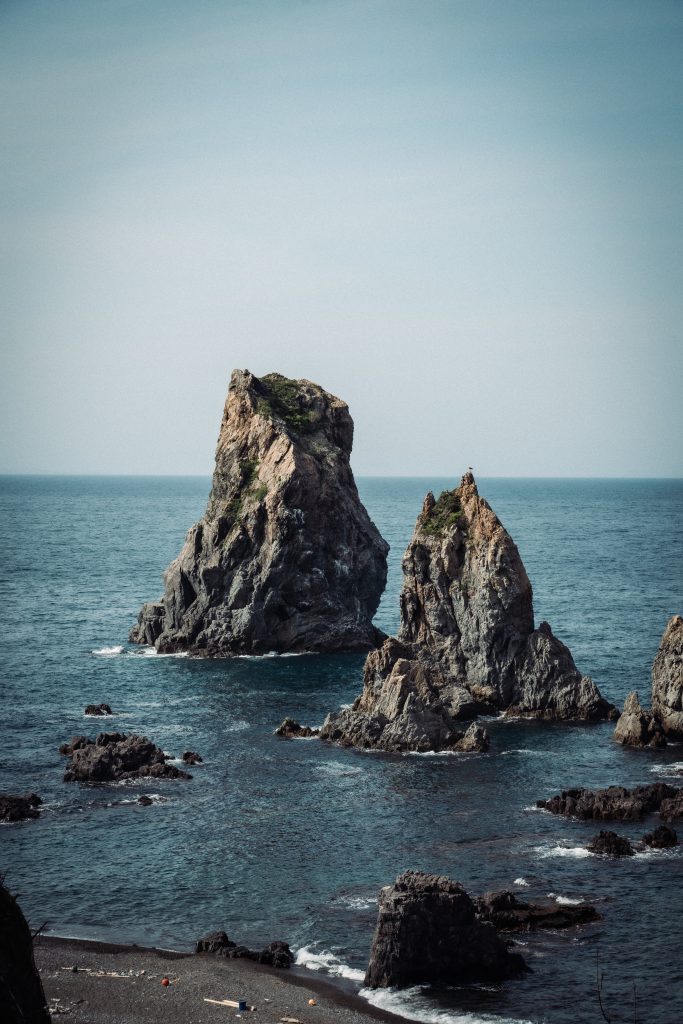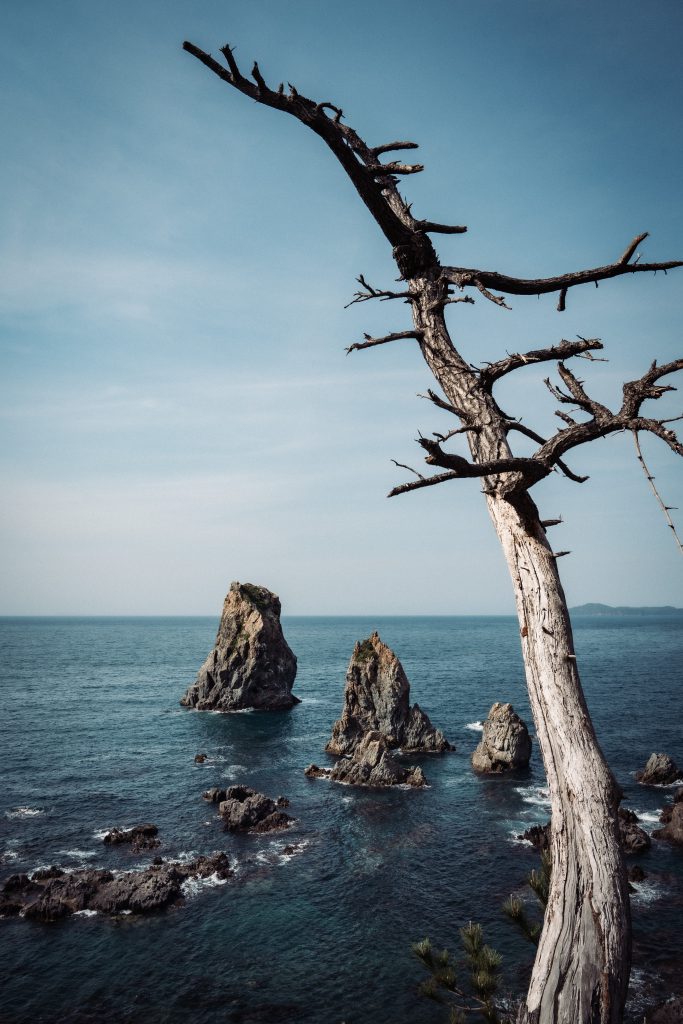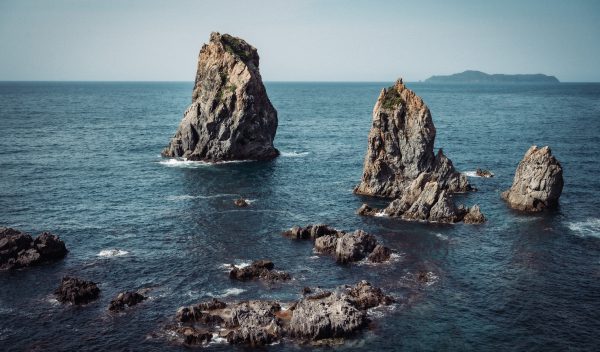
- >
- See
- >
- Omijima Island
See
- Area
- Omijima Island/Kayoi/Senzaki Area
Omijima Island
Kita-Nagato Kaigan National Park, Omijima Island designated as a national scenic beauty spot and a natural monument
Located in the center of the Kita-Nagato Kaigan National Park, Cheonghae Island is approximately 40 km in circumference and is also known as the "Maritime Alps." It is truly a natural museum of great scale, with many works of art such as caves, precipitous cliffs, and stone pillars carved by nature, and many strange and bizarre rock formations. Visitors can enjoy the scenery of Cheonghae Island from the land while strolling along the Cheonghae Island Nature Study Path, and from the sea on the Cheonghae Island sightseeing boat. Omijima Island is also a popular spot for quality scuba diving, and its popularity has spread by word of mouth and now attracts many divers from within and outside the prefecture. Visitors can see the unique topography of Omijima Island and rare planktonic creatures.
Photo 1 taken by Koichi (@Kfish1882) / Cooperation by NICO STOP
Natural Wonders
Photo Spots
Basic Information
| Address | Senzaki Shizuura, Nagato, Yamaguchi 759-4106 |
|---|---|
| Access | ・20 min. by bus from JR Nagato City Station ・50 min. by car from Mine IC of Chugoku Expressway |
| Parking | 150 units |
| Parking Fees | ■Passenger cars (standard and mini) 500 yen/time ■Buses (large, medium and micro) 1,500 yen/time ■Motorcycles 100 yen/time *Please note that a fee is required for each entry and exit from the parking lot. |
Map
Image Gallery
Photographs by photographer Koichi (@Kfish1882) (courtesy of NICO STOP)
Recommended Spots & Experiences in Omijima Island
*The departure and arrival point for the Omijima Island Tourist Steamers is in the Senzaki area.
Museum of Magma, Omijima Island
Here is a pamphlet that explains the formation and rock features of Omijima Island in an easy-to-understand manner. This pamphlet, supervised by Professor Emeritus Teruki Imaoka of Yamaguchi University, provides an easy-to-understand explanation of Omijima Island from a geological perspective. It is a fun way for children and adults alike to learn about Omijima Island.
Brochure(PDF)
≪Higashiyama Kaii and Omijima Island
Kaii Higashiyama, one of Japan’s most famous Japanese painters, created a large mural painting measuring approximately 3.8 meters in height and 14.3 meters in width, said to be modeled on a scene from Omijima Island, in the Nami Room of Chowadono, the Imperial Palace, which was completed in 1968. The motif of the painting, entitled “Tide at Dawn,” is the semura of Omijima Island, and the artist spent a year touring the nation’s oceans in search of an image of Japan’s seas. Two years later, in 1971, he began work on the sliding door painting “Taoist Voice” at Toshodaiji Temple in Nara, which is said to be a compilation of Japanese seascapes. For the artist, the image of the Japanese sea may have been Omijima Island.



